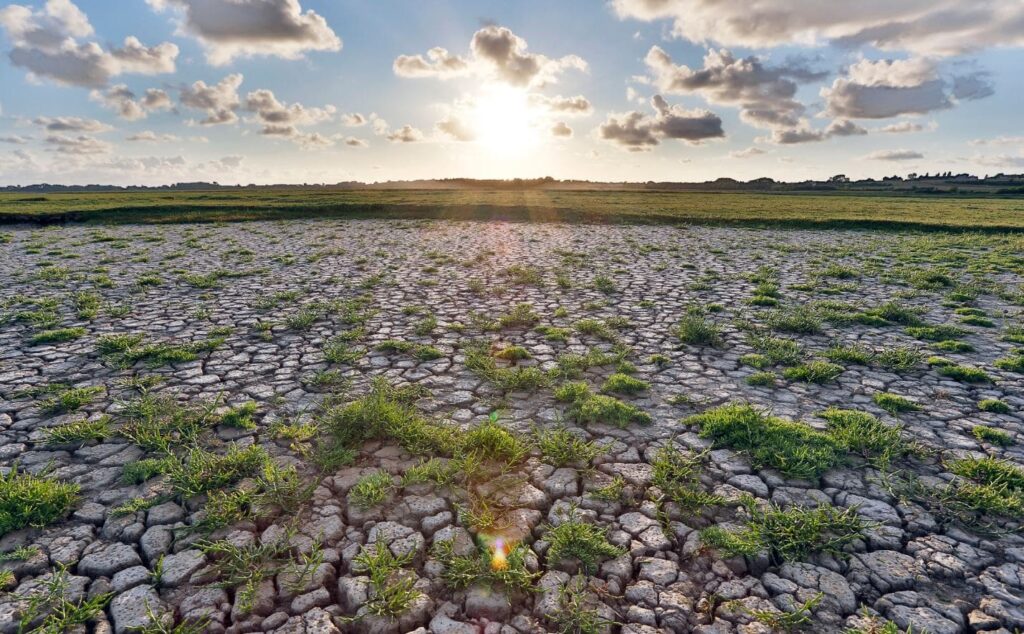Introduction
Climate change continues to be a source of risk and poses a threat to food security across the world. It has undesirable environmental effects, such as causing low rainfall and extreme climate events. In turn, it has a negative impact on global food production. Climate change causes adverse environmental conditions, which lead to a decline in global crop, livestock, and fisheries production.
Low Crop Production
Climate change causes low rainfall and natural disasters that contribute to low crop production. Many countries across the globe have been experiencing little and unpredictable rainfall, high temperatures, and more heat waves (Habib-ur-Rahman et al. 2022, p. 2). The effects of these are a decline in crop production and an increase in infestation by crop pests and diseases. Moreover, climate change causes the occurrence of natural disasters, such as floods, heat waves, droughts, and storms (Habib-ur-Rahman et al. 2022, p. 2). As a result of these extreme climate events, crop production continues to fall, and farmers often incur huge losses. Therefore, climate change causes low rainfall, high temperatures, and natural disasters that lead to a significant decrease in crop production.

A Decline in Livestock Production
Climate change contributes to inadequate rainfall, high temperatures, and extreme climate events that lead to low livestock production. These undesirable climate conditions have several adverse impacts, including the lack of sufficient animal feed (Cheng, McCarl & Fei 2022, p. 2). In turn, this aspect directly contributes to low livestock production, for instance, by causing high mortality rates and low reproduction rates. The high carbon dioxide levels, low rainfall, and high temperatures contribute to the problems, such as the low quality of animal feeds, inadequate water, and increased cases of animal pests and diseases (Cheng, McCarl & Fei 2022, p. 2). As a result, livestock production has been declining over the years. In order to enhance livestock production, effective measures should be implemented to address the changes in climate conditions.
A Reduction in Fisheries Production
Fisheries production has been declining over the years due to the impacts of climate change on ecological systems and aquaculture. Climate change causes rising sea levels, the occurrence of strong cyclones, and the increase in temperatures, which adversely affects coral reefs and destroys the ecosystem needed for breeding fish (Muhala et al. 2021, p. 2). As a result, fish count in oceans has been declining as a result of the dynamic nature of climate. Furthermore, there are more cases of droughts and floods, which have an adverse effect on fisheries production (Muhala et al. 2021, p. 2). In addition to having an adverse effect on aquaculture, these climatic conditions also lead to a decline in the quantity of fish available in rivers and inland water bodies. Therefore, valid measures need to be implemented to protect ecological systems and enhance fish production.
Receive personalized assistance from our writers, ensuring your paper is both original and tailored to your needs.
Conclusion
Global food production for crops, livestock, and fisheries has been declining due to the changing climate. There has been an increase in extreme climate events, such as floods, temperature changes, droughts, and heat waves, which have caused a decrease in crop and animal production. Additionally, the occurrence of droughts and cyclones has a negative effect on fisheries production. Therefore, there is a need to develop and implement strategies that help to combat the adverse effects of climate change so as to enhance global food production.
Reference List
Cheng, M, McCarl, B & Fei, C 2022, ‘Climate change and livestock production: A literature review,’ Atmosphere, vol. 13, no. 1, pp. 1-20, viewed 30 June 2023, DOI:10.3390/atmos13010140.
Habib-ur-Rahman, M, Ahmad, A, Raza, A, Hasnain, MU, Alharby, HF, Alzahrani, YM, Bamagoos, AA, Hakeem, K.R, Ahmad, S, Nasim, W, Ali, S, Mansour, F & Sabagh, A 2022, ‘Impact of climate change on agricultural production; Issues, challenges, and opportunities in Asia,’ Frontiers in Plant Science, vol. 13, pp. 1-22, viewed 30 June 2023, DOI:10.3389/fpls.2022.925548.
Muhala, V, Chicombo, TF, Macate, IE, Guimarães-Costa, A, Gundana, H, Malichocho, C, Hasimuna, OJ, Remédio, A, Maulu, S, Cuamba, L, Bessa-Silva, AR & Sampaio, I 2021, ‘Climate change in fisheries and aquaculture: Analysis of the impact caused by Idai and Kenneth Cyclones in Mozambique,’ Frontiers in Sustainable Food Systems, vol. 5, pp. 1-12, viewed 30 June 2023, DOI:10.3389/fsufs.2021.714187.


